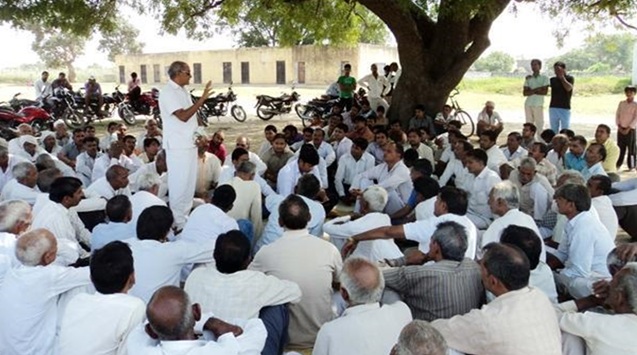- Access to the judicial system in rural India has historically been limited and difficult.
- Rural citizens often face long distances, high legal costs, complex procedures, and inefficiencies in judicial institutions, which hinder their access to justice.
- To address these issues, the Gram Nyayalayas Act, 2008 was enacted.

Objectives of Gram Nyayalayas
- To bring justice closer to rural citizens.
- To ensure speedy disposal of petty cases.
- To reduce the burden on district and higher courts.
- To make the justice process simple, accessible, and affordable.
Gram Nyayalayas are not just judicial institutions; they are part of a constitutional framework that promotes a culture of justice and equal opportunities in rural society.
Supreme Court Concerns
Recently, the Supreme Court expressed concerns regarding the formation and effective functioning of Gram Nyayalayas. The main issues highlighted were:
- Unclear Obligation for Formation
- Section 3 of the Gram Nyayalayas Act, 2008 allows state governments to establish Gram Nyayalayas.
- However, it is not mandatory. The Supreme Court emphasized the need for clear directives on whether the formation of Gram Nyayalayas should be obligatory.
- Lack of Resources
- Most states already face limited judicial resources.
- Establishing Gram Nyayalayas requires additional financial and human resources.
- Financial and administrative constraints in many states hinder their effective functioning.
- Increased Burden on High Courts
- While Gram Nyayalayas aim to reduce the burden on district courts, appeals and writ petitions against their decisions may increase the workload of high courts.
Key Features of Gram Nyayalayas
- Formation
- A Gram Nyayalaya can be established for each Panchayat or a group of neighboring Panchayats.
- The state government appoints a “Nyayadhikari (Judicial Officer)” in consultation with the respective High Court.
- Jurisdiction
- Gram Nyayalayas operate like mobile courts, reaching rural areas to conduct conciliation and judicial proceedings.
- They handle both types of cases:
- Civil cases: Land disputes, property disputes, family disputes, etc.
- Criminal cases: Minor offenses, local conflicts, etc.
- Dispute Resolution Process
- The main goal is to resolve disputes through conciliation (sulh).
- Social workers may be appointed as conciliators.
- Decisions are based on principles of natural justice.
- Gram Nyayalayas are not bound by the Indian Evidence Act, 1872 (Note: your Hindi text says 2023, possibly a typo), enabling quicker dispute resolution.
- They function as courts of first instance, and appeals can be made to higher courts.
- Accessibility and Importance of Justice
- Gram Nyayalayas ensure that no citizen is deprived of justice due to social, economic, or other disadvantages.
- They make justice accessible in rural communities and provide equal opportunities for justice.
Current Status of Gram Nyayalayas
- Initial Target: Approximately 2,500 Gram Nyayalayas.
- Current Status: Around 314 are operational, far below the target.
State-wise Progress:
- Leading states: Maharashtra, Madhya Pradesh, Rajasthan – better implementation.
- Lagging states: Uttar Pradesh, Bihar – limited or almost no formation.
Challenges
- Lack of priority at the state level – many states have not prioritized Gram Nyayalayas.
- Financial constraints – operating these courts is expensive.
- Shortage of human resources – trained judges and conciliators are not sufficiently available.
- Fear of burden on high courts – appeals against decisions can increase pressure on higher judiciary.
Support from Central and State Governments
- Under the Central Sponsored Scheme for Gram Nyayalayas, the central government provides financial assistance to states.
- The scheme’s objectives include:
- Establishment of courts.
- Operational and administrative support.
- Training for judicial officers and conciliators.
- Active participation of state governments plays a decisive role in the success of this initiative.
|
Ques. When was the Gram Nyayalayas Act implemented ?
(a) 2005
(b) 2008
(c) 2010
(d) 2015
Ques. What is the main objective of Gram Nyayalayas ?
(a) To deal only with serious crimes
(b) To bring justice closer to rural citizens and provide speedy disposal of minor cases
(c) To resolve only property disputes
(d) To resolve cases of the High Court
|


